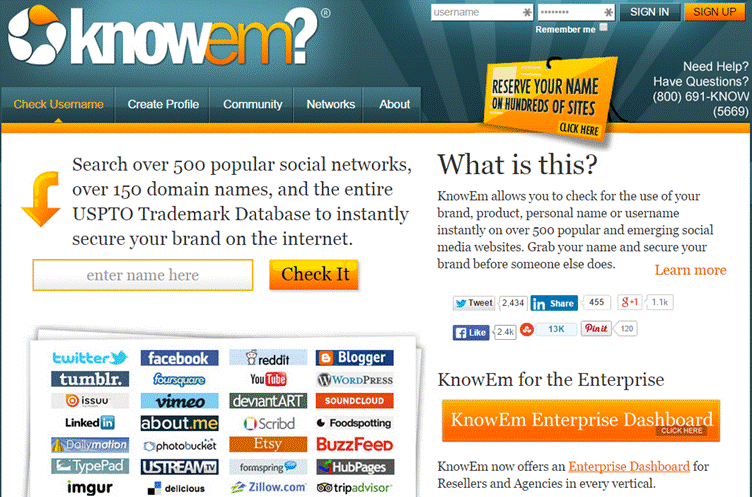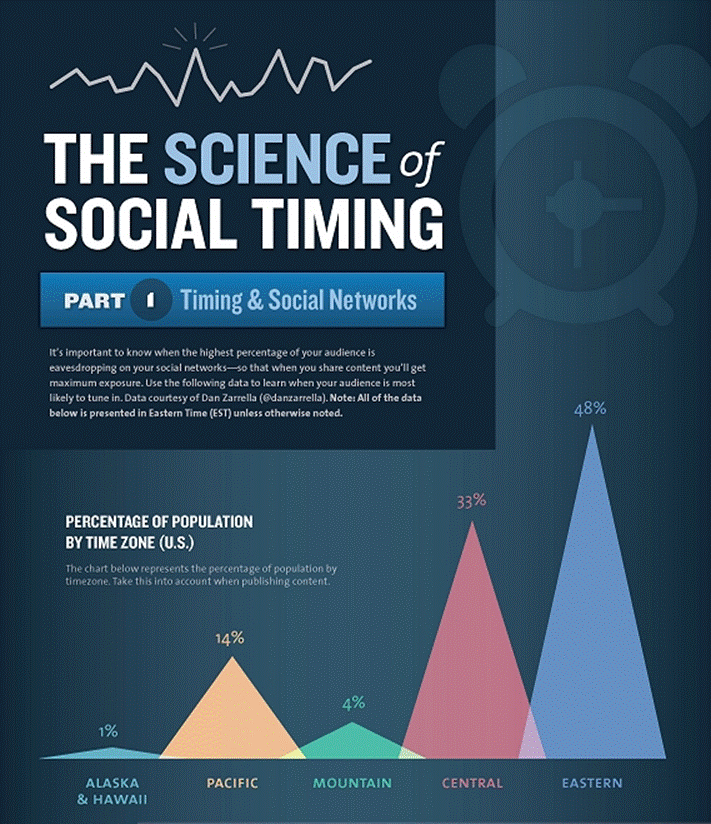If you want to do social media right, you need to be strategic. Many of us don’t start out that way. We sign up for a site to try it out and fumble around till we understand how it works and what we can achieve.
But what if you were starting from scratch, knowing more about how social media works than when you started? In that case, you’d probably take a different approach. This social media strategy checklist will help even newbies to build a social media presence from the ground up. It will cover everything from deciding which sites are right for you to tracking results.
-
- Set Goals
Before you can succeed with social media, you need to know what you can achieve, and which of the possible achievements are most important to you. Goals for your social media strategy could include:- increasing awareness of your brand
- giving your brand personality
- connecting with your customers with helpful or entertaining information
- delivering customer service
- getting access to influencers
- showing leadership in your niche
- increasing authority with your audience and search engines
- improving your online reputation
- building a network of people interested in your business
- streamlining and segmenting your marketing
- increasing conversions
See this list as a guide to some of the things you could achieve with social media, but remember to set goals specific to YOUR business needs. Ideally, these goals should have a specific time allocated to achieve them. That will stop your social media strategy from becoming a time-sucking black hole, as can happen so often. Allocating time also helps you to figure out whether all your goals are achievable in the time allowed, which can be a good reality check for your overall strategy.
- Set Goals
-
- Do Competitive Analysis
One way to prime your social media strategy for success is to check out examples of good practice. That’s not just about seeing what the most successful brands are doing overall – there are plenty of resources to help you find these – but about checking out your competition and seeing what they are doing well. You’ll be able to find out their activity level, the number of fans, the types of content they are posting and more, and can use this to jump start your own strategy. SwellPath has an excellent guide to social media competitor analysis that can help with this.
- Do Competitive Analysis
- Define Your Audience
Before you start creating content, you need to know who your audience is and what they want. Data you can use for this includes:- Google Analytics or other analytics data on your audience and interests.
- Social media analytics data (if you have existing accounts) from Twitter, Facebook and others.
- Information coming via your customer service portal on the main questions and concerns people have about your company, products and services.
- A recent SEP article gives guidance on how to research your social media audience so you can meet their needs and target your marketing better.
- Choose Your Handle
Your social media handle is part of your brand, but with billions of social media users out there, you can’t guarantee that the username you want is still available. For a quick check, go to Knowem and type your desired username in the search box. The results list shows the availability of the name on the most popular networks.
If the name you want is already gone, it’s time to get creative about alternatives. KeriLynn Engel offers some excellent tips on doing this. When you’ve found a handle that works for you, go back to Knowem to make sure it’s available everywhere. You don’t want to confuse or lose your audience because of inconsistent social media branding.
Some companies have multiple social media handles for different purposes. For example, Dell’s Twitter account posters often use[name]atDell as their handle. That’s something to think about if you want to have different people posting while still identifying them as part of the group. Or you could have different handles depending on the content you are posting. If you take this approach, then you’ll need a social media dashboard set up for teams, like the ones described in this post from Convince and Convert. - Pick Your Best Social Networks
You can’t be everywhere. It just isn’t possible to give the same focused attention to every social network, so you have to choose the ones that best match your business goals and your potential audience. The mix will almost certainly include Facebook, as the most popular network out there, but beyond that, check out this roundup from Buffer, which suggests ways to make the decision. In addition to audience demographics, you need to consider the type of content shared predominantly on the network, the focus of the network and more. There’s a world of difference between social media activity on LinkedIn and on Instagram. - Trick Out Your Profiles
Once you decide on your networks, brand them so they match your business, creating similar cover images, profile avatars and business descriptions across social media sites. Optimize your descriptions, because they will show up in search results. Here’s a guide to an optimized social media profile from Kissmetrics to help you get started. - Define Social Media Guidelines
If you’re not handling social media yourself, then you need to set guidelines for anyone handling social media on your behalf. This could include guidance on:- the appropriate voice and tone
- brand mentions
- excluded topics
- currency of information
- proprietary information
- discussing competitors
Check out Intel’s social media guidelines as an example of a clearly written social media brief. Mashable also has a useful guide to creating a social media policy. Remember, if in doubt, leave it out, because you can’t take back mistakes once they are made.
- Decide On Content
Now it’s time to get to the nitty-gritty of your strategy, by working out what you are actually going to post on social media. In part, this depends on what you already know about the audience and on what’s best for the particular social media platform. This infographic from Social Media Today tells you that the five most shared types of social media posts are photos, opinions, status updates, links to articles and personal recommendations. It also includes a breakdown on the top activities by social media site.
If you’re looking for a shortcut, here it is: use visual content. Images work on most social media sites, so include photos, quote graphics, images from presentations and slideshows, meme, animated GIFs – any memorable and shareable image that helps you meet your social media goals.
To make your content even more shareable, try social listening to find out what’s already hot and already being shared. Then you can riff off that to create something shareable of your own. - Curate Content Selectively
There’s no rule that says that you have to create all the content you share yourself. Content curation allows you to promote yourself while promoting other people, which is a good thing, because social media is not all about you. Share content created by your current and potential customers and you relieve the content creation pressure while enhancing your relationship with them. For best results, add context to the content you share via a comment, an introduction, a summary of key points or an introduction. Check out the posts by Chris Herbert, who runs the Connected Business Center group on LinkedIn, to see how to do this well. - Streamline Content Length
Your content has to work hard – and that includes social media content. Not only must it meet your goals, but it must be optimized so that people and search engines love it. Even when you’re crafting a tweet, you need to pay attention to content length. That’s because you must leave room for people to put their own comments and quote your Twitter handle.
If your social media strategy includes sharing your own blog content – and it should – then pay attention to the length of headlines and excerpts and to post images. Ensure that these present your posts in the best possible way. Buffer’s got a great roundup on optimal headline length that can help you get this right. And check out the CoSchedule Headline Analyzer for help with creating appealing titles. - Post Regularly (And Get The Timing Right)
To get the most from social media, show up and post something. And if you can’t be online all day (who can?) use tools to help you reach your audience no matter what time zone they are in.

It’s worth knowing that your potential reach extends if you time your shares correctly. That’s why so many people are obsessed with finding the perfect time to post. Check out KISSMetrics’ post on the Science of Social Timing, this infographic on QuickSprout and Buffer’s roundup as a starting point for your own strategy. After you’ve been using the sites for a while, you can use your own social analytics to work out when your audience reads and shares, then tweak your social media scheduling accordingly.
Buffer is a great tool for setting up a social media posting schedule. Here’s a good guide from Ileane Smith of Basic Blog Tips. Buffer works with pre-set time slots, allowing you to automate part of your social media posting. This is a good idea, especially if you have limited time, but social media has to be social and interactive, so avoid the temptation to automate everything. - Build A Community
Every social network has a way for you to segment your audience and most offer the chance to create communities. Whether you’re talking about lists (Twitter), groups (Facebook and LinkedIn), circles (Google+), shared boards (Pinterest) or another kind of community, these functions on the different social sites allow you to unite your audience around shared interests.
It’s not easy to create and run a community successfully. Peg Fitzpatrick says communities are like puppies, both adorable and hard work. Done right, communities can enhance your authority and bring new business your way as well as serving as an online hub for those interested in your niche. Check out Peg’s tips on successful community building as a starting point.
Remember, social media is not all about you. Take the time to regularly share tribe members’ content and they will return the favor without you even having to ask.
The best communities are inclusive and help your social media fans and followers to feel like they belong. If you’re looking for another way to create that community feel, consider using Triberr to connect with your most committed followers. You create a tribe where you can choose to share content automatically and there’s group chat, too.
Speaking of chat, don’t ignore the opportunity to connect with your audience via Twitter chats and group discussions. These are a great way to talk more directly to people, help them get to know you and increase brand awareness and content reach. - Increase Reach With Influencers, Advocates And Ads
Once your strategy is in place, you can extend your reach in two ways: first, by attracting the attention of influencers and advocates and second by using social advertising. What’s the difference between influencers and advocates?
Advocates are the people who love your stuff, love your brand, and love your personality, and are motivated to share that love with others. They’re not looking for compensation and will comment on every post, retweet every tweet and share every social post. They are raving fans, and being able to connect with you on social media and be part of your community is reward enough. They may not have a huge audience, but they know people like themselves who will love you too.
Influencers are people who talk about your niche and influence others to try products and services. They have trusted personal brands and if they think your stuff is great, they will share it with their audience. Sometimes this happens naturally; at others it happens via influencer marketing platforms. For example, Triberr runs collaborative influencer marketing campaigns, or you could use enterprise platforms like Appinions. To help, here’s a guide to finding social media influencers plus some tips on alternatives to Klout for measuring social media influence.
Beyond that, you can reach a wider audience with social ads. These exist on Twitter (promoted tweets), Facebook (boosted posts) and LinkedIn, and are being rolled out on other platforms. These allow you to get your social media posts in front of people who meet your target demographic, putting you in connection with more of your ideal customers. Check out Hootsuite’s guide to help with this. - Monitor And Track
As previously mentioned, social listening is part of your social media strategy. It’s important to know when people mention your brand or share and discuss your content. Tools like Google Alerts, Talkwalker Alerts and Social Mention will help with this. You can also turn on notifications for mobile social apps, though if you’re getting a lot of mentions, this can get annoying.
It’s also important to see how your strategy is working. All the main social media sites include analytics, so check them out to see how your strategy is working. Or you could use an all-in-one dashboard tool to track your progress across multiple social sites. - Review And Tweak
No strategy should be set in stone, especially if something isn’t working. Make sure you are getting what you need and expect from your social media strategy. If not, go back to the beginning and look at your audience and goals again. Here’s a great social media checklist from the Whole Brain Group to keep you on track.
Did I miss anything? What other elements do you think are essential for success when creating a social media strategy?
By Sharon Hurley Hall
About the Author: Sharon Hurley Hall
Sharon Hurley Hall is a professional writer and blogger. Her career has spanned more than 20 years, including stints as a journalist, academic writer, university lecturer and ghost writer. Connect with Sharon on her website.









Share Your Thoughts?